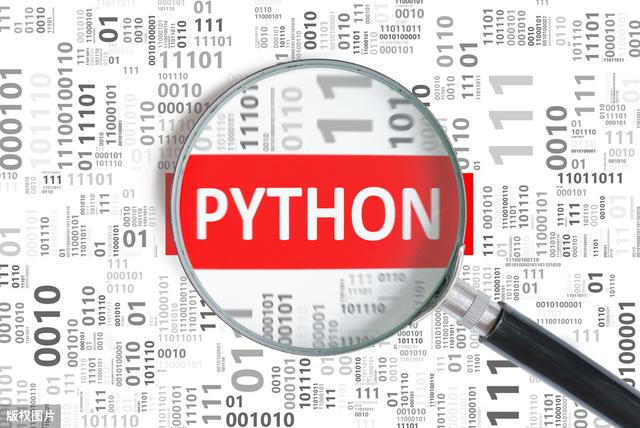
19、endswith()
描述:判断字符串是否以指定字符或子字符串结尾。
语法:str.endswith("suffix", start, end) 或str[start,end].endswith("suffix") 用于判断字符串中某段字符串是否以指定字符或子字符串结尾。—> bool 返回值为布尔类型(True,False)
参数:
- suffix — 后缀,可以是单个字符,也可以是字符串,还可以是元组("suffix"中的引号要省略,常用于判断文件类型)。
- start —索引字符串的起始位置。
- end — 索引字符串的结束位置。
注意:空字符的情况。返回值通常为True
示例:
"I love python".endswith('n')True"I love python".endswith("python")True"I love python".endswith("n",0,6)# 索引 i love 是否以“n”结尾。False"I love python".endswith("") #空字符True"I love python".endswith(("n","z"))#遍历元组的元素,存在即返回True,否者返回FalseTrue"I love python".endswith(("k","m"))False#元组案例file = "python.txt"if file.endswith("txt"): print("该文件是文本文件")elif file.endswith(("AVI","WMV","RM")): print("该文件为视频文件")else: print("文件格式未知20、startswith()
描述:判断字符串是否以指定字符或子字符串开头。
语法:str.endswith("suffix", start, end) 或
str[start,end].endswith("suffix") 用于判断字符串中某段字符串是否以指定字符或子字符串结尾。
—> bool 返回值为布尔类型(True,False)
参数:
- suffix — 后缀,可以是单个字符,也可以是字符串,还可以是元组("suffix"中的引号要省略)。
- start —索引字符串的起始位置。
- end — 索引字符串的结束位置。
注意:空字符的情况。返回值通常也为True
示例:
"hello,i love python".startswith("h")True"hello,i love python".startswith("l",2,10)# 索引 llo,i lo 是否以“l”开头。True"hello,i love python".startswith("") #空字符True"hello,i love python"[0:6].startswith("h") # 只索引 hello,True"hello,i love python"[0:6].startswith("e")False"hello,i love python"[0:6].startswith("")True"hello,i love python".startswith(("h","z"))#遍历元组的元素,存在即返回True,否者返回FalseTrue"hello,i love python".startswith(("k","m"))False21、isalnum()
描述:检测字符串是否由字母和数字组成。str中至少有一个字符且所有字符都是字母或数字则返回 True,否则返回 False
语法:str.isalnum() -> bool 返回值为布尔类型(True,False)
参数:
示例:
"seven-11".isalnum()False"seven11".isalnum()True"seven".isalnum()True"11".isalnum()Tr22、isalpha()
描述:检测字符串是否只由字母组成。字符串中至少有一个字符且所有字符都是字母则返回 True,否则返回 False。
语法:str.isalpha() -> bool 返回值为布尔类型(True,False)
参数:无
示例:
"I love python".isalpha()#存在空格返回FalseFalse"Ilovepython".isalpha()True"Ilovepython123".isalpha()Fals23、isdecimal()
描述:检查字符串是否只包含十进制字符。字符串中若只包含十进制字符返回True,否则返回False。该方法只存在于unicode对象中。注意:定义一个十进制字符串,只需要在字符串前添加前缀 'u' 即可。
语法: str.isdecimal() -> bool 返回值为布尔类型(True,False)
参数:无
示例:
"123456".isdecimal()Trueu"123456".isdecimal()True"123456python".isdecimal()False24、isdigit()
描述:检测字符串是否只由数字组成.字符串中至少有一个字符且所有字符都是数字则返回 True,否则返回 False。
语法:str.isdigit() -> bool 返回值为布尔类型(True,False)
参数:无
注:能判断“①”,不能判断中文数字。但 isnumeric() 函数可以。
示例:
"python".isdigit() #全为字母False"123".isdigit() #全为数字True"python666".isdigit() #字母和数字的组合False"一二三四五六七".isdigit() #中文数字输出FalseFalse"①".isdigit() True25、isidentifier()
描述:判断str是否是有效的标识符。str为符合命名规则的变量,保留标识符则返回True,否者返回False。
语法:str.isidentifier() -> bool 返回值为布尔类型(True,False)
参数:无
示例:
"123".isidentifier() #变量名为123False"def".isidentifier() #变量名为保留字True"_123".isidentifier() #变量名有下划线开头True"student".isidentifier()#变量名由字母开端True26、islower()
描述:检测字符串中的字母是否全由小写字母组成。(字符串中可包含非字母字符)字符串中包含至少一个区分大小写的字符,且所有这些区分大小写的字符都是小写,则返回 True,否则返回 False。
语法:str.islower() -> bool 返回值为布尔类型(True,False)
参数:无
示例:
#字符串中的字母全为小写"i love python".islower() True #字符串中的字母全为小写,也存在非字母的字符"我爱python!".islower() True#字符串中有大写字符"I love python".islower() False27、isupper()
描述:检测字符串中的字母是否全由大写字母组成。(字符串中可包含非字母字符)。字符串中包含至少一个区分大小写的字符,且所有这些区分大小写的字符都是大写,则返回 True,否则返回 False。
语法:str.isupper() -> bool 返回值为布尔类型(True,False)
参数:无
示例:
"I LOVE PYTHON".isupper() #全为大写字母True"i LOVE PYTHON".isupper() #存在小写字母False"我爱PYTHON".isupper() #存在非字母的字符Tru28、inumeric()
描述:测字符串是否只由数字组成。这种方法是只适用于unicode对象。字符串中只包含数字字符,则返回 True,否则返回 False。
语法:str.isnumeric() -> bool 返回值为布尔类型(True,False)
参数:无
示例:
u"123456".isnumeric() #全为数字True"123456".isnumeric()True"python666".isnumeric() #字母数字组合False"一二三四五六".isnumeric() #中文数字True"①".isnumeric()Tr29、isprintable()
描述:判断字符串中是否有打印后不可见的内容。如: 等字符。若字符串中不存在 等不可见的内容,则返回True,否则返回False。
语法: str.isprintable() -> bool 返回值为布尔类型(True,False)
参数:无
示例:
#不存在用print()打印后不可见的内容"i love python".isprintable() True#存在用print()打印后不可见的内容 "i love python ".isprintable() False"i love python".isprintable()Fals30、isspace()
描述: 检测字符串是否只由空格组成。若字符串中只包含空格,则返回 True,否则返回 False。
语法:str.isspace() -> bool 返回值为布尔类型(True,False)
参数:无
示例:
str1 = " "#空格str2 = "i love python" print(str1.isspace())Trueprint(str2.isspace())Falseprint(str2[1].isspace()) #字符串str2 的第二个字符为空格True31、istitle()
描述:检测判断字符串中所有单词的首字母是否为大写,且其它字母是否为小写,字符串中可以存在其它非字母的字符。若字符串中所有单词的首字母为大写,且其它字母为小写,则返回 True,否则返回 False.
语法:str.istitle() -> bool 返回值为布尔类型(True,False)
参数:无
示例:
"I Love Python".istitle() #各单词的首字母均为大写,其余字母为小写True"I love python".istitle() False"I LOVE PYTHON".istitle()False"我爱Python".istitle() #存在其它非字母字符,True



![JMeter压力测试入门教程[图文]](http://pic.xiahunao.cn/JMeter压力测试入门教程[图文])
:UnitTest)
,详细知识点梳理!)



)








